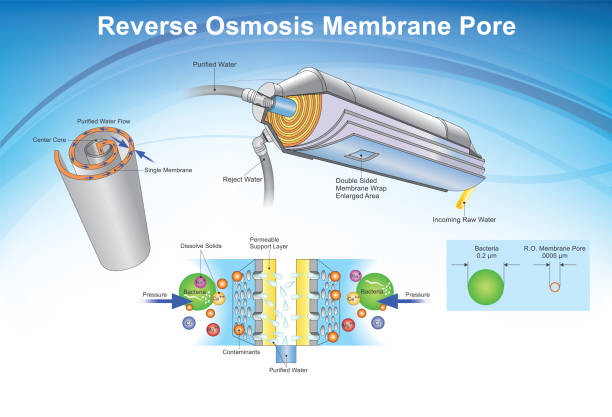Do you know what factors affect reverse osmosis desalination rate?
Hello everyone, today Susan is here to answer some questions about water treatment equipment, hope it can help you.
13 Factors Affecting Reverse Osmosis Desalination Rate
Desalination rate is the percentage of the concentration of soluble impurities removed from the equipment feed water through the reverse osmosis membrane.
Desalination rate = (1 - salt content of produced water / salt content of feed water) x 100%.

The desalination rate of the reverse osmosis membrane element has been determined when it is manufactured, and the high and low desalination rate depends on the density of the ultra-thin desalination layer on the surface of the reverse osmosis membrane element, and the denser the desalination layer is, the higher the desalination rate is, and the lower the amount of water produced at the same time. The desalination rate of reverse osmosis for different substances is mainly determined by the structure and molecular weight of the substances, the desalination rate of imported reverse osmosis membrane element for high valence ion and its complex monovalent ion can be more than 99%, and the desalination rate for monovalent ions, such as sodium ion, potassium ion and chlorine ion is a little bit lower, but it is also more than 98%; and the desalination rate for the organic matter with molecular weight more than 100 can also reach 98%.

Factors affecting the desalination rate of reverse osmosis are:
◆ Ion valence number
Desalination rate is increased with the increase of ion valence, and the desalination rate of bivalent and trivalent salt is higher than that of monovalent salt.
◆ Molecule size
The desalination rate increases with the increase of molecular diameter.
◆ Raw water temperature
When the temperature of raw water increases, the desalination rate increases because the viscosity of water decreases.
◆ Raw water concentration
Desalination rate decreases when raw water concentration increases.
◆Working pressure
When the working pressure increases, the desalination rate increases, but it is not obvious.
◆ PH value
The desalination rate decreases under acidic condition though the membrane is not easy to be clogged.
◆ Dissolved gas
Soluble gases are easy to permeate without removing CO2, SO2, O2, Cl2, H2S, etc. in free state;
◆Hydrogen bonding tendency
The removal rate is very low for compounds with strong hydrogen bond, such as water, phenol and ammonia, etc. (It is also realized to remove impurities and dissolved substances in water to separate them from other substances.
◆Organic substances
Organic matter in water has a contaminating effect on the membrane, and the more organic matter there is, the more easily the performance of the membrane deteriorates.
◆ Water hardness
The higher the hardness of water, the easier it is to block the membrane. For high hardness water, it should be softened first, and the hardness should be reduced before entering reverse osmosis.
◆ Solid particles
Solid particles are very harmful to reverse osmosis membrane and must be pre-treated.
◆ Microorganisms
Microorganisms and bacteria in the water are harmful to the membrane and must be pre-treated (our company adopts ultra-rate membrane for treatment, which is at the advanced level in China).
◆Oxide
Metal oxides can not be removed by themselves when they enter reverse osmosis, and should be removed by chemical drugs regularly.




 Reverse Osmosis Water Treatment Technology: Principles, Applications, Membrane Fouling Prevention,
Reverse Osmosis Water Treatment Technology: Principles, Applications, Membrane Fouling Prevention,
 Comparison of Characteristics for Nanofiltration/Ultrafiltration/Reverse Osmosis Systems!
Comparison of Characteristics for Nanofiltration/Ultrafiltration/Reverse Osmosis Systems!
 What are the differences in treatment methods for various types of industrial wastewater?
What are the differences in treatment methods for various types of industrial wastewater?
 RO Pretreatment Practical Handbook: Detailed Analysis of Four Major Raw Water Processes
RO Pretreatment Practical Handbook: Detailed Analysis of Four Major Raw Water Processes